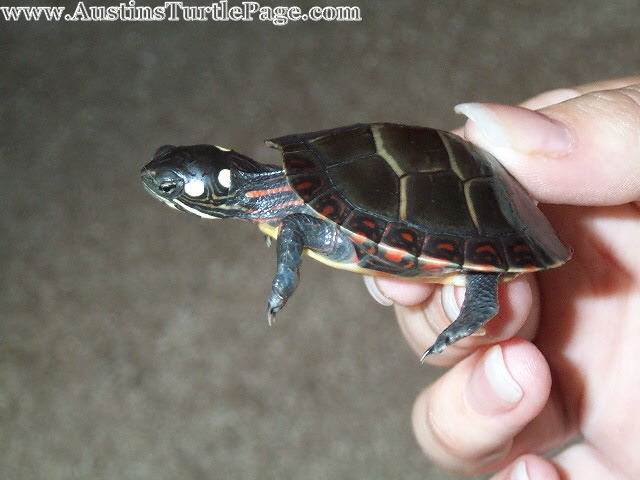
Baby Eastern Painted Turtle Care: A Comprehensive Guide
Introduction
Eastern painted turtles (Chrysemys picta picta) are small, semi-aquatic turtles native to eastern North America. They are popular pets due to their vibrant coloration and relatively small size. Baby painted turtles require specialized care to ensure their health and well-being. This comprehensive guide will provide detailed instructions on all aspects of baby eastern painted turtle care, from housing and feeding to health and hibernation.
Housing
Enclosure:
- Size: A 10-gallon aquarium or turtle tank is suitable for a single baby painted turtle. As they grow, they will require a larger enclosure.
- Substrate: Use a combination of sand and gravel as the substrate. Avoid using materials that can be ingested, such as wood chips or pebbles.
- Water: Provide a shallow water area that is deep enough for the turtle to submerge its head and body. Use a water filter to keep the water clean.
- Basking Area: Create a basking area using a floating platform or a rock that extends above the water level. The basking area should be warm and well-lit.
Temperature and Lighting:
- Water Temperature: Maintain the water temperature between 75-80°F (24-27°C).
- Basking Temperature: The basking area should be around 85-90°F (29-32°C).
- Lighting: Provide 12-14 hours of UVB lighting per day. UVB rays are essential for calcium absorption and shell health.
Feeding
Diet:
- Hatchlings: Feed hatchlings live insects, such as crickets, mealworms, and waxworms.
- Juveniles: As they grow, introduce a variety of foods, including leafy greens (e.g., romaine lettuce, dandelion greens), fruits (e.g., strawberries, blueberries), and commercial turtle pellets.
- Adults: Adult painted turtles are omnivorous and will eat a wide range of foods, including insects, snails, worms, fish, and plants.
Feeding Frequency:
- Hatchlings: Feed hatchlings daily.
- Juveniles: Feed juveniles every other day.
- Adults: Feed adults 2-3 times per week.
Health
Common Health Issues:
- Respiratory Infections: Symptoms include wheezing, coughing, and discharge from the nose or eyes.
- Shell Rot: A bacterial infection that causes the shell to become soft and discolored.
- Eye Infections: Symptoms include swelling, redness, and discharge from the eyes.
- Metabolic Bone Disease: A condition caused by a lack of calcium and vitamin D, leading to weak and deformed bones.
Prevention and Treatment:
- Maintain a clean environment: Regularly clean the enclosure and water to prevent bacterial growth.
- Provide adequate nutrition: Ensure the turtle is getting a balanced diet with sufficient calcium and vitamin D.
- Regular veterinary checkups: Take the turtle to a veterinarian for regular checkups to detect and treat any health issues early on.
Hibernation
Preparation:
- Gradual Temperature Reduction: In the fall, gradually reduce the water and basking temperatures over several weeks.
- Stop Feeding: Stop feeding the turtle 2-3 weeks before hibernation.
- Create a Hibernation Box: Provide a hibernation box filled with moist sphagnum moss or vermiculite.
Hibernation:
- Place the Turtle in the Box: Place the turtle in the hibernation box and cover it with the substrate.
- Store in a Cool Place: Store the box in a cool, dark place, such as a refrigerator or unheated basement.
- Monitor the Turtle: Check on the turtle periodically to ensure it is not freezing or overheating.
Spring:
- Gradual Temperature Increase: In the spring, gradually increase the temperature in the hibernation box over several weeks.
- Reintroduce Food: Once the turtle is active, start feeding it again.
Additional Care Tips
- Handle with Care: Turtles are fragile creatures. Always handle them gently and support their body.
- Provide Enrichment: Offer toys and hiding places to keep the turtle stimulated.
- Monitor Growth: Track the turtle’s weight and shell size to ensure it is growing properly.
- Be Patient: Baby painted turtles take time to grow and mature. Provide consistent care and patience to ensure their well-being.
Conclusion
Caring for baby eastern painted turtles requires a commitment to providing a suitable environment, proper nutrition, and attentive health care. By following the guidelines outlined in this comprehensive guide, you can ensure the health and happiness of your pet turtle for many years to come. Remember to consult with a veterinarian for any specific health concerns or questions.
